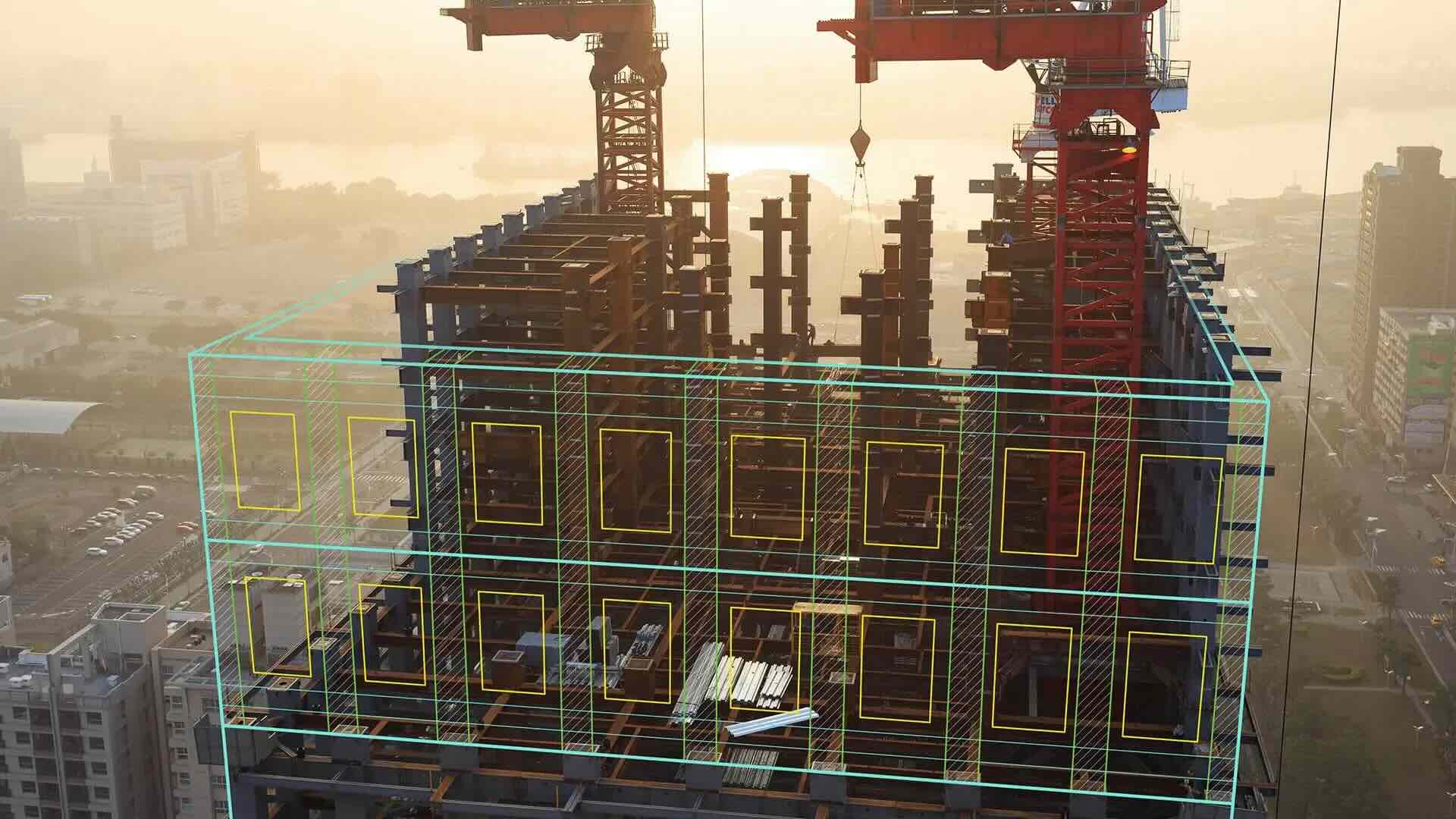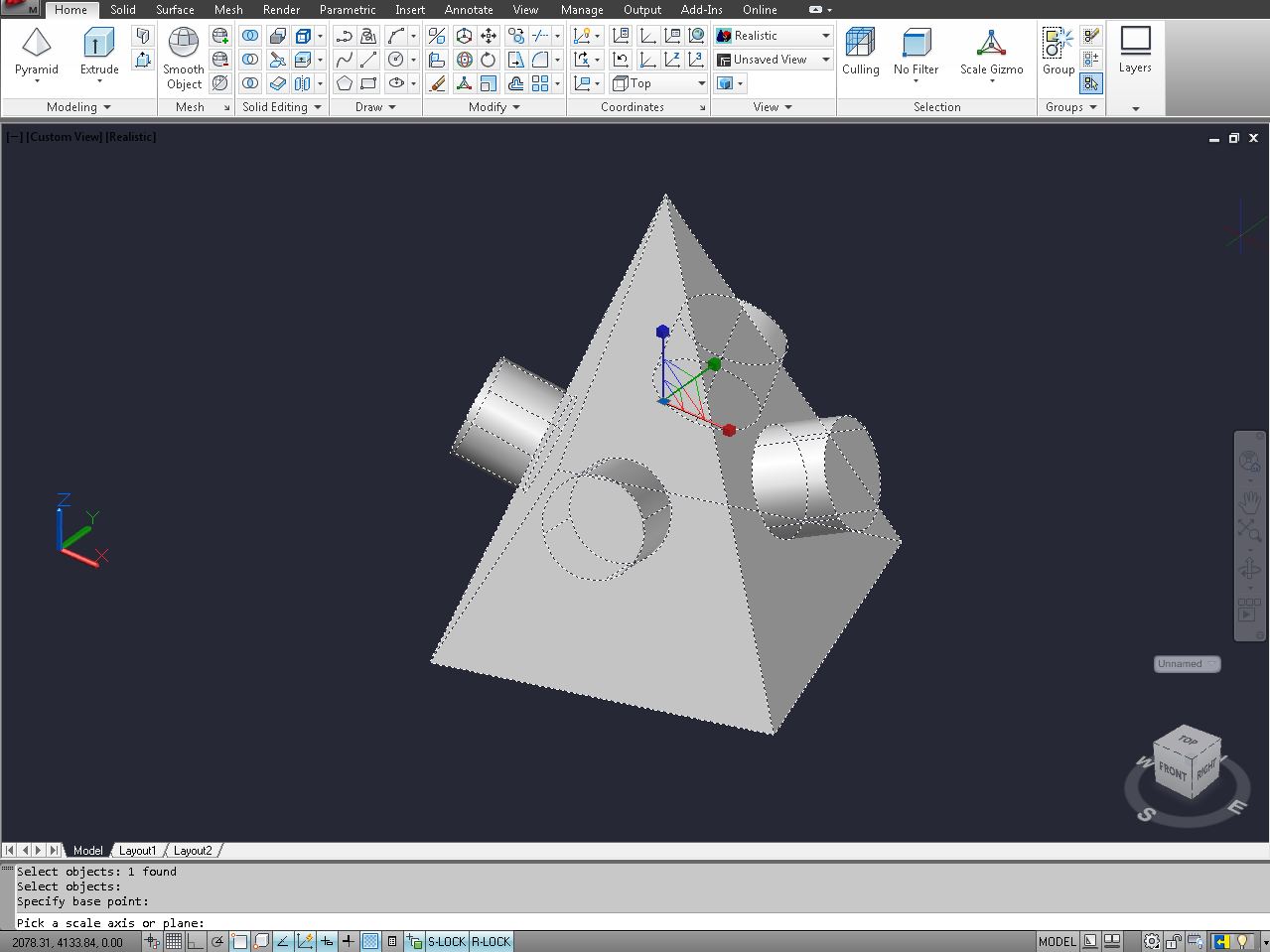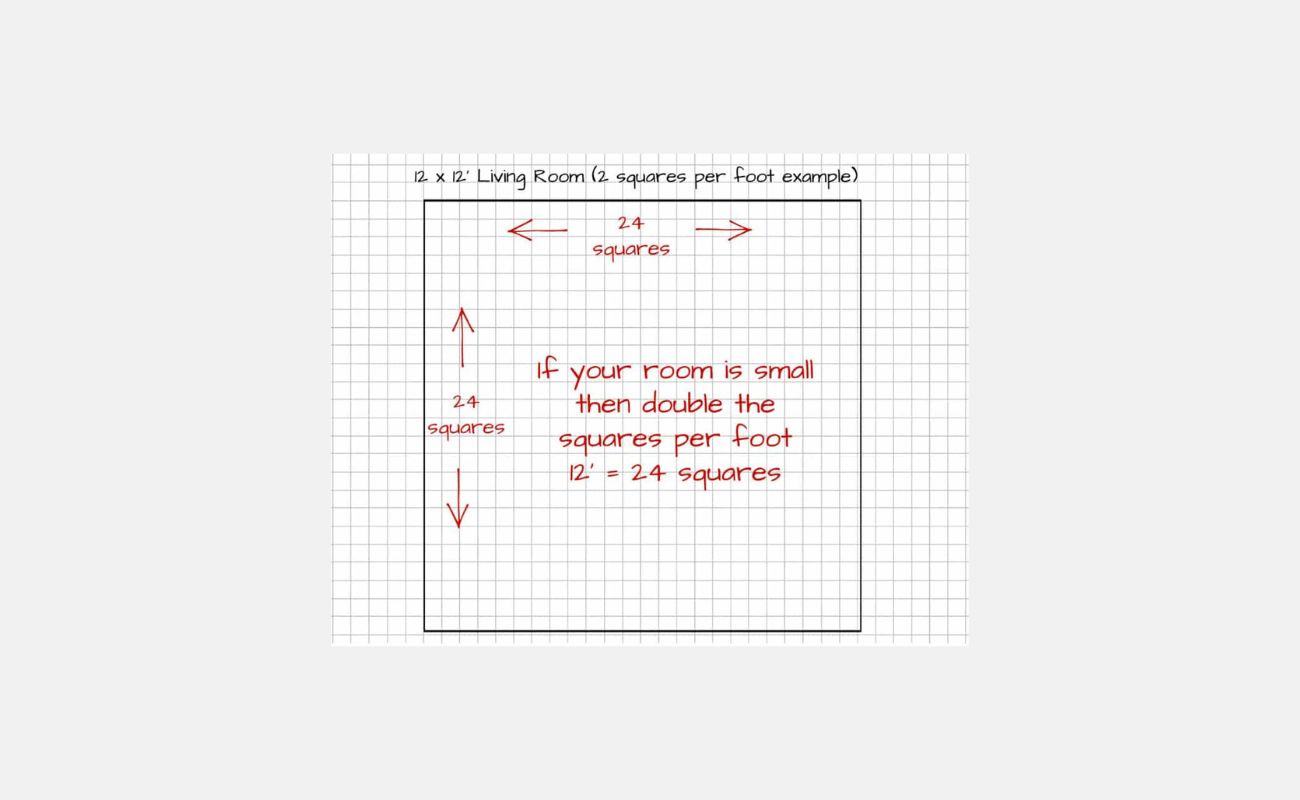Home>diy>Building & Construction>How To Scale Construction Business


Building & Construction
How To Scale Construction Business
Modified: January 9, 2024
Learn how to successfully scale your building construction business with our expert strategies and tips. Implement proven techniques to grow your company and maximize profits.
(Many of the links in this article redirect to a specific reviewed product. Your purchase of these products through affiliate links helps to generate commission for Storables.com, at no extra cost. Learn more)
Introduction
Building a successful construction business requires more than just laying bricks and pouring concrete. It requires strategic planning, efficient management, and a solid foundation to support growth and scalability. Whether you’re a small contractor or a large construction company, there are key steps you can take to scale your business and reach new heights of success.
In this article, we will explore nine essential strategies to help you scale your construction business. From establishing a strong foundation to leveraging technology and expanding market reach, these actions will empower you to grow your business and navigate the dynamic construction industry with confidence.
Breathing new life into your construction business begins with laying a strong foundation. This involves creating a clear vision and defining your company’s values and mission. Take the time to analyze your strengths, weaknesses, opportunities, and threats (SWOT analysis) to gain a better understanding of your market position. This insight will inform your strategic decisions moving forward.
With a solid foundation in place, the next step is to build a reliable team. Surround yourself with talented professionals who share your values and are dedicated to excellence. Invest in their development and foster a positive work culture that encourages collaboration and growth. By empowering your team members and providing them with the necessary tools and resources, you will create a workforce that is motivated and capable of delivering exceptional results.
In addition to a reliable team, implementing efficient project management systems is crucial for scaling your construction business. Utilize technology and project management software to streamline processes, track progress, and manage resources effectively. This will not only improve productivity but also enhance communication and ensure projects are completed on time and within budget.
An optimized supply chain is essential for the smooth operation of a construction business. Streamline your procurement processes and establish strong relationships with suppliers to ensure timely delivery of materials while minimizing costs. By centralizing your supply chain and utilizing strategic partnerships, you can gain a competitive edge and reduce project delays.
Leveraging technology is a game-changer in today’s construction industry. Embrace digital tools such as Building Information Modeling (BIM), virtual reality, and drones to enhance project visualization, improve construction accuracy, and reduce rework. Additionally, invest in cloud-based project management and communication platforms to enable real-time collaboration and data sharing across your organization.
Developing strategic partnerships can open doors to new opportunities and accelerate your business growth. Collaborate with architects, engineers, and subcontractors who align with your values and share your vision. These partnerships can help you secure larger projects, expand your capabilities, and leverage specialized expertise, all while building a strong network within the industry.
Expanding your market reach is essential for scaling your construction business. Identify new geographic areas or market sectors where you can showcase your expertise and attract new clients. Develop a targeted marketing strategy, including digital marketing initiatives and attending industry events, to raise awareness of your brand and services.
Ensuring quality control and safety compliance is paramount in the construction industry. Implement comprehensive quality assurance processes and stringent safety protocols to minimize risk and protect your team, clients, and reputation. Regularly review and update your safety policies to stay current with industry regulations and ensure a safe working environment.
Managing cash flow effectively is vital for scaling your construction business. Monitor expenses, track project profitability, and establish clear payment terms with clients. Maintain strong relationships with financial institutions and consider alternative financing options such as lines of credit or equipment leasing to fund growth initiatives.
By implementing these strategies, you will position your construction business for sustainable growth, increased profitability, and enhanced market competitiveness. Remember, scaling a construction business takes time and effort, but with careful planning and execution, you can create a solid foundation for success in the dynamic and evolving construction industry.
Key Takeaways:
- Build a strong foundation by defining your vision, values, and target market. Invest in a skilled team, streamline project management, and optimize supply chain processes to scale your construction business effectively.
- Leverage technology, develop strategic partnerships, expand your market reach, ensure quality control, and manage cash flow to navigate the challenges and achieve long-term success in the construction industry.
Read more: What Is A Construction Business
Establishing a Strong Foundation
In the construction industry, a strong foundation is not only necessary for the buildings we construct but also for the businesses we build. To scale your construction business successfully, it is crucial to establish a solid foundation that will support growth and sustainability.
One of the first steps in establishing a strong foundation is to clarify your company’s vision, values, and mission. Clearly define what your business stands for, the goals you aim to achieve, and the principles that guide your operations. This will serve as a compass, ensuring that all business decisions align with your core values and long-term objectives.
Additionally, conducting a comprehensive SWOT analysis (Strengths, Weaknesses, Opportunities, and Threats) can provide valuable insights into your business’s current position in the market and help you identify areas of improvement. By understanding your strengths and weaknesses, you can capitalize on your advantages and address any vulnerabilities. Moreover, analyzing the opportunities and threats in the market will enable you to make informed decisions and respond effectively to external factors that may impact your business.
Another essential aspect of establishing a strong foundation is defining your target market. Identify your ideal clients and understand their needs, preferences, and pain points. By tailoring your services and marketing strategies to meet the specific demands of your target audience, you can differentiate yourself from competitors and attract quality leads.
Furthermore, create a robust brand identity that resonates with your target market. Develop a compelling brand story, logo, and visual identity that communicate your unique value proposition. Consistently convey your brand message across all customer touchpoints, from your website and social media profiles to your project signage and promotional materials. A strong brand identity instills trust, creates brand recognition, and fosters a sense of professionalism.
To establish a strong foundation, invest in your team members and foster a positive work culture. Hire employees who align with your company’s values, possess the necessary skills and experience, and are committed to delivering excellence. Provide ongoing training and opportunities for personal and professional development to empower your team members and foster a sense of ownership and loyalty.
In addition to building a skilled workforce, establish clear communication channels within your organization. Encourage open and transparent communication, where employees feel comfortable sharing their ideas, concerns, and feedback. Regularly conduct team meetings, provide feedback on performance, and facilitate collaboration among team members. Effective communication will foster a cooperative and productive work environment, leading to improved efficiency and higher-quality outputs.
Lastly, continuously evaluate and refine your business processes and workflows. Identify areas of improvement, whether it is streamlining administrative tasks, optimizing project scheduling, or enhancing customer relationship management. Embrace technology solutions, such as project management software, accounting tools, and customer relationship management (CRM) systems, to automate and streamline your business operations.
By establishing a strong foundation, you are setting your construction business up for long-term success and growth. A clear vision, defined target market, strong brand identity, skilled team, effective communication, and efficient processes will serve as the building blocks for scaling your business and thriving in the competitive construction industry.
Building a Reliable Team
Building a reliable team is essential for the success and growth of your construction business. A team of dedicated and skilled professionals can drive your projects forward and ensure that deliverables are met with excellence. Here are some key steps to building a reliable team:
1. Hire the Right People: Start by identifying the specific roles and skills needed in your construction business. Develop clear job descriptions and criteria for selecting candidates. Look for individuals who not only have the necessary qualifications but also align with your company culture and values. Conduct thorough interviews and reference checks to ensure you find the best fit for each position.
2. Invest in Training and Development: Building a reliable team involves investing in their growth and development. Provide comprehensive training programs to enhance skills and knowledge. Offer opportunities for certifications, workshops, and industry conferences to keep your team members up to date with the latest trends and advancements in the construction industry. This investment not only improves their capabilities but also boosts employee morale and loyalty.
3. Foster a Positive Work Environment: Create a positive work environment that encourages collaboration, teamwork, and open communication. Promote a culture of respect and recognition, where team members feel valued for their contributions. Encourage creativity and innovation by providing opportunities for input and suggestions. Regular team building activities and social events can also strengthen relationships and boost team morale.
4. Empower and Delegate: Building a reliable team requires empowering your employees and delegating responsibilities accordingly. Trust your team members to make decisions and take ownership of their tasks. Provide them with the necessary resources and support to succeed. Delegating responsibilities not only lightens your workload but also fosters a sense of accountability and ownership among team members.
5. Offer Competitive Compensation and Benefits: To attract and retain top talent, it is important to offer competitive compensation and benefits packages. Research industry benchmarks and consider market rates when determining salaries and benefits. Recognize and reward exceptional performance with bonuses, incentives, or promotions. Providing a fair and competitive compensation package demonstrates your commitment to appreciating and retaining your team members.
6. Encourage Continuous Feedback: Regularly provide feedback to your team members to help them grow and improve. Constructive criticism, when delivered in a supportive manner, can help employees reach their full potential. Likewise, encourage team members to provide feedback on processes, projects, or work environments. Creating a feedback loop fosters a culture of continuous improvement and communication.
7. Develop Leadership Opportunities: Building a reliable team involves cultivating strong leaders within your organization. Identify potential leaders among your team members and provide opportunities for leadership development. Assign them to mentor and guide junior employees, empowering them to take on greater responsibilities. Investing in leadership development not only strengthens your team but also creates a pathway for succession planning.
Remember, building a reliable team takes time and effort. It requires attracting the right individuals, fostering a positive work environment, investing in training and development, and providing opportunities for growth and leadership. A reliable team will not only contribute to the success of your construction projects but also support the overall growth and success of your construction business.
Implementing Efficient Project Management Systems
Efficient project management is crucial for the success of any construction business. It involves effectively planning, organizing, and controlling resources to ensure projects are completed on time, within budget, and to the client’s satisfaction. Implementing efficient project management systems can significantly improve productivity, reduce costs, and enhance client satisfaction. Here are some key steps to implement efficient project management systems:
1. Utilize Project Management Software: Embrace technology and leverage project management software to streamline your processes and improve communication and collaboration. Project management software can help you track project progress, manage schedules, allocate resources, and communicate with team members in a centralized and efficient manner. Choose a software solution that aligns with your needs and offers features such as task management, document sharing, and milestone tracking.
2. Develop a Comprehensive Project Plan: Before starting any construction project, develop a comprehensive project plan that outlines the scope, objectives, deliverables, and timeline. Break down the project into smaller, manageable tasks and create a detailed schedule with defined milestones and deadlines. Clearly communicate the project plan to your team and stakeholders involved to ensure everyone understands their roles and responsibilities.
3. Assign Project Managers: Assign a dedicated project manager for each construction project. A project manager is responsible for overseeing the project, coordinating tasks, managing resources, and ensuring the project is delivered within the agreed parameters. Select project managers who possess strong leadership and organizational skills, as well as the ability to handle multiple tasks and priorities.
4. Ensure Effective Communication: Communication is key to successful project management. Establish clear communication channels and protocols within your team and with clients and subcontractors. Regularly update stakeholders on project progress, risks, and changes. Encourage open and transparent communication, where team members feel comfortable raising concerns or providing input. Utilize project management software to facilitate real-time communication and information sharing.
5. Implement Risk Management Strategies: Construction projects are prone to various risks and uncertainties. Implement robust risk management strategies to identify, assess, and mitigate potential risks. Conduct thorough risk assessments and develop contingency plans to minimize the impact of unforeseen events. Regularly monitor and review risks throughout the project lifecycle to ensure proactive risk mitigation.
6. Monitor and Control Project Progress: Regularly monitor and evaluate project progress against the planned schedule and budget. Utilize project management software to track task completion, resource utilization, and overall project performance. Identify any deviations from the plan and take corrective actions accordingly. Regularly review project milestones and deliverables to ensure they are aligning with client expectations.
7. Foster Collaboration and Teamwork: Encourage collaboration and teamwork among your project team members. Foster an environment where individuals can share knowledge, expertise, and ideas. Collaborative decision-making and problem-solving can lead to innovative solutions and improved project outcomes. Foster a culture of continuous improvement by learning from each project and implementing best practices in future projects.
By implementing efficient project management systems, you can streamline your construction projects, increase productivity, and enhance client satisfaction. Utilizing project management software, developing comprehensive project plans, assigning dedicated project managers, ensuring effective communication, implementing risk management strategies, monitoring project progress, and fostering collaboration will contribute to the success of your construction projects and the growth of your construction business.
Streamlining Supply Chain Processes
Efficient supply chain management is crucial for the success and profitability of a construction business. Streamlining supply chain processes helps to ensure timely delivery of materials, minimize costs, and maintain smooth project operations. Here are some key steps to streamline your supply chain processes:
1. Centralize and Standardize Procurement: Centralize your procurement processes by establishing preferred suppliers and creating a standardized procurement system. This allows for better control over purchasing, pricing, and order tracking. Implement clear guidelines and procedures for requesting and approving purchases to eliminate unnecessary delays and inefficiencies.
2. Develop Strong Relationships with Suppliers: Building strong relationships with reliable and high-quality suppliers is essential for a streamlined supply chain. Regularly communicate with suppliers to ensure ongoing availability of materials, negotiate favorable pricing terms, and stay informed about any potential supply chain disruptions. Developing these relationships also allows for better flexibility and responsiveness to your project needs.
3. Embrace Technology for Inventory Management: Utilize inventory management software to effectively track and manage your construction materials. This software can help you monitor inventory levels, streamline reordering processes, and automate inventory control. By accurately tracking stock levels and anticipating material needs, you can avoid delays and keep projects on schedule.
4. Optimize Material Handling and Storage: Implement efficient material handling and storage practices to minimize wasted time and effort. Organize the layout of your construction site or warehouse in a logical manner, ensuring easy access to frequently used materials. Utilize shelving, racks, and labeling systems to keep materials organized and easily identifiable. This streamlines the retrieval process and reduces the chances of errors or delays.
5. Utilize Just-In-Time (JIT) Methodologies: Adopting a Just-In-Time (JIT) approach helps to minimize excess inventory and reduce holding costs. By ordering materials as needed, you can optimize cash flow and eliminate the need for excessive storage space. However, it is important to carefully manage lead times and maintain strong relationships with suppliers to ensure timely delivery.
6. Implement Vendor Managed Inventory (VMI): Vendor Managed Inventory is a collaborative supply chain arrangement where the supplier takes responsibility for managing and replenishing inventory levels. This reduces the burden on your business to monitor and reorder materials constantly. VMI allows for better supplier visibility and provides you with real-time data to make informed decisions regarding inventory levels and restocking.
7. Continuous Improvement and Analysis: Regularly review and analyze your supply chain processes to identify areas for improvement. Conduct regular performance evaluations of suppliers, considering factors such as reliability, quality, and responsiveness. Analyze data on material usage, delivery times, and cost savings to identify trends and implement necessary changes.
8. Implement Lean Principles: Apply lean principles to your supply chain processes to eliminate waste and achieve maximum efficiency. This includes identifying and eliminating non-value-added activities, optimizing transportation routes, and reducing excess inventory. By streamlining processes and focusing on value-added activities, you can improve efficiency and reduce costs throughout your supply chain.
Streamlining supply chain processes is an ongoing effort that requires careful planning, collaboration, and continuous improvement. By centralizing procurement, building strong supplier relationships, utilizing technology for inventory management, optimizing material handling and storage, implementing JIT methodologies, exploring VMI, analyzing performance, and applying lean principles, you can achieve a streamlined supply chain that supports the timely and cost-effective completion of your construction projects.
Read more: How To Start A Construction Business
Leveraging Technology for Growth
In today’s digital age, leveraging technology is crucial for the growth and success of a construction business. Embracing technological advancements can improve operational efficiencies, enhance communication, and offer a competitive edge. Here are key ways to leverage technology for growth:
1. Building Information Modeling (BIM): Implementing Building Information Modeling (BIM) technology can revolutionize the way you plan, design, and construct projects. BIM allows for the creation of 3D models that encompass all project information, including geometry, spatial relationships, quantities, and attributes. This technology improves collaboration among project stakeholders, reduces errors and rework, and streamlines project delivery.
2. Virtual Reality and Augmented Reality: Adopting virtual reality (VR) and augmented reality (AR) technologies can enhance project visualization and improve client engagement. VR allows clients to experience a project in a virtual environment before construction begins, providing a realistic and immersive experience. AR overlays digital information onto the physical world, allowing for real-time visualizations and on-site problem-solving.
3. Drones and Aerial Imaging: Utilize drones and aerial imaging technology to efficiently capture site surveys, monitor construction progress, and inspect hard-to-reach areas. Drones offer a cost-effective and time-saving solution for data collection, replacing traditional methods that are labor-intensive and time-consuming. Aerial imaging provides accurate and detailed visuals that can aid in project planning and monitoring.
4. Cloud-Based Project Management and Collaboration Platforms: Leverage cloud-based project management and collaboration platforms to streamline communication and information sharing. These platforms allow team members to access project documents, share updates, and collaborate in real-time, regardless of their physical location. Cloud-based solutions provide enhanced transparency, efficiency, and security for construction projects.
5. Mobile Apps and Digital Tools: Utilize mobile apps and digital tools designed specifically for the construction industry. Mobile apps enable field staff to access project information, submit progress reports, and communicate with the office in real-time. Digital tools, such as construction estimating software and scheduling solutions, streamline processes and improve accuracy. Investing in these tools improves productivity and efficiency, leading to better project outcomes.
6. Internet of Things (IoT): Embrace the Internet of Things (IoT) to enhance construction site productivity and safety. IoT devices can monitor equipment utilization, track resource consumption, and provide real-time data on site conditions. Connected sensors and devices improve decision-making, optimize resource allocation, and enable predictive maintenance, reducing downtime and improving overall project efficiency.
7. Data Analytics and Business Intelligence: Leverage data analytics and business intelligence tools to gain valuable insights into your construction business operations. Analyzing project data, such as cost performance, productivity metrics, and resource utilization, can highlight areas for improvement and inform strategic decision-making. Data-driven insights enable proactive adjustments, enhance project planning, and drive overall business growth.
8. Green and Sustainable Technologies: Incorporate green and sustainable technologies into your construction projects to meet environmental standards and leverage market demand. Technologies such as solar panels, smart building systems, and energy-efficient designs not only reduce environmental impact but also improve project efficiency and long-term operational costs.
By leveraging technology, you can optimize project delivery, improve collaboration, enhance client experiences, and position your construction business for growth. Embrace technologies like BIM, VR/AR, drones, cloud-based platforms, mobile apps, IoT, data analytics, and sustainable technologies to stay competitive, increase productivity, and achieve long-term success in the rapidly evolving construction industry.
Focus on building a strong team and implementing efficient project management systems to handle increased workload and maintain quality.
Developing Strategic Partnerships
Developing strategic partnerships is key to the growth and expansion of your construction business. Collaborating with other industry professionals and building strong relationships can open doors to new opportunities, provide specialized expertise, and enhance your competitive advantage. Here are essential steps for developing strategic partnerships:
1. Identify Potential Partners: Start by identifying potential partners within the construction industry who complement your business goals and enhance your capabilities. Look for companies or individuals with expertise in areas that align with your services or those who serve the same target market but offer complementary services. Research industry associations, attend networking events, and seek recommendations from trusted sources to find potential partners.
2. Assess Compatibility and Alignment: Before entering into a partnership, assess the compatibility and alignment of values, goals, and culture between your business and potential partners. Ensure that there is shared vision and a mutual understanding of the objectives and benefits of the partnership. It is essential to establish a strong foundation of trust and collaboration to ensure the success of the partnership.
3. Establish Clear Objectives: Clearly define the objectives and expectations of the partnership. Determine the specific projects or initiatives that will be undertaken together and outline the desired outcomes. Establish measurable goals and key performance indicators (KPIs) to monitor the progress and success of the partnership. Clear communication and transparency will be key to achieving these objectives.
4. Leverage Expertise and Resources: Strategic partnerships provide the opportunity to leverage the expertise and resources of your partners. Collaborate with partners who bring unique skills, knowledge, or technologies to the table. This enables you to offer comprehensive solutions to clients and expand your service offerings without investing in additional resources or capabilities.
5. Foster Open Communication and Collaboration: Effective communication and collaboration are fundamental to a successful partnership. Establish regular communication channels to keep all stakeholders informed and engaged. Foster an environment of open dialogue, where ideas and feedback are encouraged. Collaborate on projects, share best practices, and leverage each other’s networks to maximize the value of the partnership.
6. Joint Marketing and Business Development: Collaborate on marketing efforts and business development initiatives to increase market visibility and attract new clients. Jointly participate in industry events, co-develop marketing materials, and cross-promote each other’s services. By combining forces, you can enhance brand recognition, reach a broader audience, and generate new business opportunities.
7. Share Risks and Rewards: In any partnership, it is important to establish a fair and equitable sharing of risks and rewards. Clearly define the financial and operational responsibilities of each partner. Establish processes for revenue sharing and cost allocation to ensure transparency and avoid conflicts. A well-balanced partnership benefits both parties and creates a win-win situation.
8. Continuous Evaluation and Adaptation: Regularly evaluate the performance and effectiveness of the partnership. Monitor the achievement of established objectives and assess the value created by the partnership. Be willing to adapt and adjust strategies as needed to ensure that the partnership remains relevant and beneficial to both parties.
Developing strategic partnerships can unlock growth opportunities, expand your market reach, and strengthen your position in the construction industry. By identifying compatible partners, establishing clear objectives, leveraging expertise, fostering communication and collaboration, joint marketing efforts, sharing risks and rewards, and continuously evaluating the partnership, you can create mutually beneficial relationships that drive the success of your construction business.
Expanding Market Reach
Expanding your market reach is essential for the growth and success of your construction business. By reaching new clients and exploring new geographic areas or market sectors, you can increase your client base, generate new revenue streams, and establish your brand as a leader in the industry. Here are important strategies to expand your market reach:
1. Identify Target Market Segments: Start by identifying new target market segments that align with your expertise and capabilities. Consider factors such as industry sectors, geographic locations, project types, or client profiles. Conduct market research and analysis to identify emerging trends, market gaps, and areas of growth potential. This will help you focus your resources and efforts on the most promising opportunities.
2. Develop a Tailored Marketing Strategy: Once you have identified your target market segments, develop a tailored marketing strategy to effectively reach and engage them. Craft a compelling value proposition that highlights your unique offerings and addresses the specific needs and pain points of your target audience. Utilize digital marketing channels, such as search engine optimization (SEO), social media marketing, and content marketing, to raise brand awareness and attract new clients.
3. Attend Industry Events and Trade Shows: Participate in industry events and trade shows to showcase your construction business and connect with potential clients and partners. These events provide valuable networking opportunities and allow you to stay up to date with the latest industry trends and innovations. Prepare an engaging booth or presentation materials that effectively communicate your company’s value proposition and differentiate you from competitors.
4. Build Relationships with Architects and Engineers: Developing strong relationships with architects and engineers is crucial for expanding your market reach. Collaborate with these professionals on projects, seek their recommendations, and demonstrate your expertise in delivering high-quality construction services. Forming strategic partnerships with architects and engineers can lead to increased referrals and access to new projects in the market.
5. Offer Specialized Services or Niche Expertise: Differentiate yourself from competitors by offering specialized services or niche expertise in specific areas of the construction industry. Develop a reputation for excellence in those areas and target clients who require those specialized skills. By positioning yourself as a go-to expert in a particular sector or service, you can attract clients with unique project needs and stand out in a crowded market.
6. Expand Geographically: Consider expanding your operations to new geographic areas where there is demand for construction services. Research and analyze potential markets, assess local regulations and market conditions, and adapt your marketing and business development strategies accordingly. Establish local contacts and build relationships with key stakeholders to navigate the new market successfully.
7. Leverage Online Platforms and Directories: Utilize online platforms and directories specifically designed for the construction industry to increase your visibility and reach. List your business in industry-specific directories, such as construction databases or online marketplaces, allowing potential clients to find and connect with you easily. Enhance your online presence through a professional website, online portfolios, and positive customer reviews.
8. Develop Referral Programs: Implement referral programs to encourage your existing clients and industry contacts to refer your construction business to their networks. Offer incentives or rewards for successful referrals, such as discounts on future projects or referral commissions. Existing satisfied clients can be your most powerful advocates and can help expand your market reach through word-of-mouth referrals.
Expanding your market reach requires a strategic approach and concerted effort. By identifying target market segments, developing tailored marketing strategies, attending industry events, building relationships with key industry professionals, offering specialized services, expanding geographically, leveraging online platforms, and implementing referral programs, you can effectively reach new clients and unlock growth opportunities for your construction business.
Ensuring Quality Control and Safety Compliance
Ensuring quality control and safety compliance is paramount in the construction industry. Maintaining high standards of quality and safety not only protects your workforce and stakeholders but also enhances your reputation and client satisfaction. Here are essential steps to ensure quality control and safety compliance in your construction business:
1. Develop and Implement Quality Management Systems: Establish a comprehensive quality management system to monitor and control quality throughout the construction process. This includes defining quality objectives, implementing quality control measures, and conducting regular inspections and audits. Adhere to industry best practices and ensure compliance with applicable standards and regulations.
2. Establish Standard Operating Procedures (SOPs): Develop standardized procedures and protocols for various construction activities, ensuring consistency and adherence to quality and safety standards. SOPs should cover areas such as subcontractor selection, material procurement, construction methodologies, and quality inspections. Train your team on these procedures to ensure understanding and compliance.
3. Conduct Regular Inspections and Audits: Regularly inspect ongoing construction projects to identify and rectify any quality issues or safety hazards. Inspections should be conducted at various stages of the project, including pre-construction, during construction, and upon project completion. Additionally, perform internal audits to ensure that quality control procedures and safety protocols are being followed consistently.
4. Implement Safety Training and Protocols: Safety should be a top priority on every construction site. Provide comprehensive safety training to all employees, ensuring they are knowledgeable about industry-specific safety hazards and practices. Incorporate safety protocols into your standard operating procedures and enforce a strong safety culture. Regularly update safety protocols to stay current with industry regulations and best practices.
5. Maintain Accurate Documentation: Keep accurate documentation of all quality control and safety-related activities. Document inspections, audits, training sessions, incident reports, and corrective actions taken. Proper documentation not only enables you to track quality and safety performance but also serves as evidence of compliance in case of any disputes or legal issues.
6. Regularly Review and Update Quality and Safety Policies: Stay updated with the latest regulations, standards, and industry practices related to quality control and safety. Regularly review and update internal policies and procedures to ensure compliance. Engage with industry organizations and participate in relevant training programs to stay informed about emerging trends and developments.
7. Engage Third-Party Inspections: Consider engaging third-party inspection services to conduct independent quality inspections and audits. Third-party inspections provide an unbiased evaluation of your construction projects and help identify areas for improvement. These inspections can enhance your credibility with clients and demonstrate your commitment to quality and safety.
8. Foster a Culture of Continuous Improvement: Ingrain a culture of continuous improvement within your construction business. Encourage feedback from employees, subcontractors, and clients to identify areas for enhancement. Regularly review construction processes, methodologies, and quality control measures to identify opportunities for optimization. Implement the necessary changes to continually improve quality and safety outcomes.
9. Comply with Environmental Regulations: Alongside quality and safety, prioritize environmental compliance within your construction projects. Adhere to environmental regulations and adopt sustainable practices whenever possible—implement waste management plans, promote resource efficiency, and consider eco-friendly construction materials. Demonstrating environmental responsibility can enhance your reputation and attract clients who value sustainable construction practices.
By ensuring quality control and safety compliance, you protect your construction projects, your workforce, and your reputation. Develop and implement quality management systems, establish SOPs, conduct inspections and audits, implement safety training and protocols, maintain accurate documentation, regularly review and update policies, engage third-party inspections, foster a culture of continuous improvement, and comply with environmental regulations. These efforts will contribute to the successful delivery of high-quality projects while prioritizing the safety and well-being of everyone involved in the construction process.
Read more: How To Get Clients For Construction Business
Managing Cash Flow Effectively
Effective cash flow management is crucial for the success and stability of your construction business. Proper management of cash flow ensures that you have enough funds to cover project expenses, manage your financial obligations, and sustain day-to-day operations. Here are key steps to effectively manage cash flow:
1. Create Accurate Cash Flow Forecasts: Develop accurate cash flow forecasts that cover short-term and long-term periods. Project your anticipated cash inflows and outflows based on project timelines, payment terms, and anticipated expenses. Regularly update your forecasts to reflect any changes in project schedules or payment terms to maintain an accurate overview of your cash flow position.
2. Monitor Project Costs and Expenses: Keep a close eye on project costs and expenses to ensure they align with your budget and cash flow projections. Regularly track your costs, including labor, materials, equipment, and subcontractor fees. Monitoring expenses allows you to identify cost overruns or potential budget issues early on, enabling you to take corrective measures and maintain a healthy cash flow.
3. Implement Clear Payment Terms: Clearly communicate and enforce payment terms with clients, subcontractors, and suppliers. Ensure that your payment terms are reasonable and realistic, taking into account both your project expenses and the industry norm. Consider requesting upfront payments or progress payments to maintain a steady cash flow throughout the project. Late or delayed payments can disrupt your cash flow, so be proactive in following up on outstanding invoices.
4. Negotiate Favorable Terms with Suppliers: Negotiate payment terms with your suppliers to manage your cash flow effectively. Seek extended payment terms or explore bulk purchasing options to optimize your payment schedule. Maintaining good relationships with your suppliers can also provide opportunities for favorable pricing or discounts, further benefiting your cash flow.
5. Invoice Promptly and Accurately: Ensure that you invoice your clients promptly and accurately. Communicate clearly the terms and conditions of the invoice, including payment due dates and acceptable payment methods. Adopt electronic invoicing where possible to expedite the invoicing process and minimize errors. Timely and accurate invoicing helps streamline your cash flow and reduces the risk of payment delays.
6. Establish Relationships with Financial Institutions: Maintain strong relationships with financial institutions, such as banks or credit unions. Work closely with your financial institution to arrange suitable lines of credit or financing options to support your cash flow needs. Having a reliable financial partner can provide peace of mind and ensure that you have access to funds when needed.
7. Manage Receivables and Collections: Effectively manage your receivables and collections to avoid cash flow disruptions. Regularly review your outstanding invoices and follow up on late payments promptly. Implement a clear collections process to ensure that unpaid amounts are addressed and resolved efficiently. Consider offering incentives for early payments or implementing penalties for late payments to encourage timely settlement of invoices.
8. Control Overhead Expenses: Analyze your overhead expenses regularly and identify areas where you can reduce costs. Look for opportunities to improve operational efficiency, such as optimizing energy usage, eliminating unnecessary expenses, or renegotiating contracts with service providers. Controlling overhead expenses frees up cash flow that can be reinvested in your business or used to cover other operational costs.
9. Implement Cash Flow Management Tools: Leverage technology and cash flow management tools to streamline your financial processes and gain better visibility into your cash flow. Utilize accounting software or online platforms that offer cash flow forecasting, expense tracking, and reporting capabilities. These tools provide real-time insights and facilitate proactive decision-making to mitigate cash flow challenges.
By effectively managing your cash flow, you ensure the financial stability and growth of your construction business. Create accurate cash flow forecasts, monitor project costs and expenses, implement clear payment terms, negotiate with suppliers, invoice promptly and accurately, establish relationships with financial institutions, manage receivables and collections, control overhead expenses, and utilize cash flow management tools. These practices will help you maintain a healthy cash flow, meet financial obligations, and seize growth opportunities in the dynamic construction industry.
Conclusion
Scaling a construction business requires careful planning, strategic execution, and a commitment to excellence. By implementing the strategies outlined in this article, you can lay a strong foundation, build a reliable team, streamline project management systems, optimize supply chain processes, leverage technology, develop strategic partnerships, expand your market reach, ensure quality control and safety compliance, and manage cash flow effectively.
Establishing a strong foundation involves defining your vision, values, and target market while building a team of skilled professionals who align with your values. Streamlining project management systems improves efficiency and communication, ensuring projects are delivered on time and within budget. Optimizing supply chain processes minimizes costs and maintains smooth operations. Leveraging technology enhances project visualization, communication, and efficiency.
Developing strategic partnerships opens doors to new opportunities and allows for the expansion of capabilities and market reach. Expanding your market reach requires identifying target segments, tailoring your marketing strategies, attending industry events, building relationships with industry professionals, and offering specialized services. Ensuring quality control and safety compliance preserves your reputation, protects stakeholders, and ensures client satisfaction.
Effective cash flow management is vital for the stability and growth of your construction business. By creating accurate cash flow forecasts, monitoring project costs, implementing clear payment terms, invoicing promptly, managing receivables, controlling expenses, and utilizing cash flow management tools, you can maintain a healthy financial position.
In conclusion, successfully scaling a construction business requires a holistic approach. By implementing these strategies, you can navigate the challenges of the construction industry, improve operational efficiencies, attract new clients, and achieve long-term success. Remember, growth takes time, patience, and continuous improvement. Stay adaptable, embrace innovation, and consistently strive for excellence in all aspects of your construction business. With the right mindset and strategies in place, your construction business has the potential to thrive and make a lasting impact in the industry.
Frequently Asked Questions about How To Scale Construction Business
Was this page helpful?
At Storables.com, we guarantee accurate and reliable information. Our content, validated by Expert Board Contributors, is crafted following stringent Editorial Policies. We're committed to providing you with well-researched, expert-backed insights for all your informational needs.














0 thoughts on “How To Scale Construction Business”